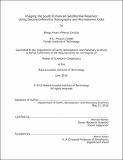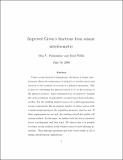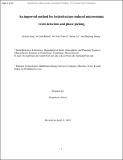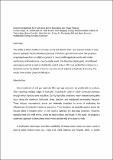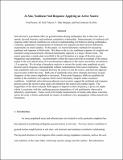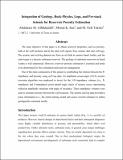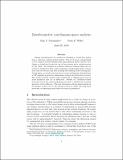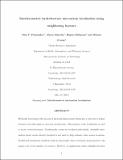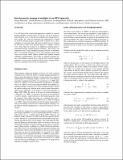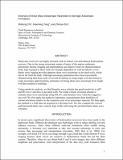Browsing ERL Industry Consortia Technical Reports by Title
Now showing items 230-249 of 456
-
Imaging Geometry And Growth Rate Of A Hydraulic Fracture Zone By Locating Induced Microearthquakes
(Massachusetts Institute of Technology. Earth Resources Laboratory, 1995)The hydraulic fracturing technique has become an important tool in the enhancement of hydrocarbons recovery, geothermal energy extraction, and solid waste disposal. The characterization of geometry parameters and growth ... -
Imaging Hydraulic Fractures: Source Location Uncertainty Analysis At The UPRC Carthage Test Site
(Massachusetts Institute of Technology. Earth Resources Laboratory, 1996)Hydraulic fracturing is a useful tool for enhancing gas and oil production. High-resolution seismic imaging of the fracture geometry and fracture growth process is the key in determining optimal spacing and location of ... -
Imaging Salt Dome Flank and Dipping Sediments Using Time Reversed Acoustics
(Massachusetts Institute of Technology. Earth Resources Laboratory, 2006)In this paper we define the theory and basic principles to move (redatum) the surface shots from a walk away VSP to be as if they had been located in the borehole. We will refer to this theory using several of the terms ... -
Imaging the Soultz Enhanced Geothermal Reservoir Using Double-Difference Tomography and Microseismic Data
(Massachusetts Institute of Technology. Earth Resources Laboratory, 2010-06)We applied the double-difference tomography method to image the P and S-wave velocity structure of the European Hot Dry Rock geothermal reservoir (also known as the Soultz Enhanced Geothermal System) at Soultz-sous-Forets, ... -
Imaging With Reverse Vertical Seismic Profiles Using A Downhole, Hydraulic, Axial Vibrator
(Massachusetts Institute of Technology. Earth Resources Laboratory, 2000)We present the analysis of a reverse vertical seismic profile (RVSP) acquired over a pinnacle reef in the northern Michigan reef trend. The survey exhibited two features of note: (1) a new, strong, downhole vertical ... -
Improved Green’s functions from seismic interferometry
(Massachusetts Institute of Technology. Earth Resources Laboratory, 2008-06-16)Under certain theoretical assumptions, the theory of seismic interferometry allows the construction of artificial (or virtual) sources and receivers at the locations of receivers in a physical experiment. This is done ... -
An improved method for hydrofracture induced microseismic event detection and phase picking
(Massachusetts Institute of Technology. Earth Resources Laboratory, 2010)The ability to detect small microearthquakes and identify their P and S phase arrivals is a key issue in hydrofracture downhole monitoring because of the low signal-to-noise ratios. We apply an array-based waveform ... -
Improved Methods for Hydrofrac Event Detection and Phase Picking
(Massachusetts Institute of Technology. Earth Resources Laboratory, 2009)The ability to detect small microseismic events and identify their P and S phase arrivals is a key issue in hydraulic fracture monitoring because of the low signal-to-noise ratios. We propose a array-based waveform ... -
In Situ Permeability Estimation: A Comparison Between Acoustic And NMR Logs
(Massachusetts Institute of Technology. Earth Resources Laboratory, 1999)Permeability estimates from acoustic logs (Stoneley waves) and NMR logs were compared using data from a geologic section consisting of sandstone and shale beds. The permeability results show very good correlation for ... -
In Situ, Nonlinear Soil Response Applying an Active Source
(Massachusetts Institute of Technology. Earth Resources Laboratory, 2009)Soil sites have a profound effect on ground motion during earthquakes due to their low wave speeds, layered structure, and nonlinear constitutive relationship. Measurements of nonlinear soil response under natural ... -
An integrated well data analysis for in-situ stress estimation
(Massachusetts Institute of Technology. Earth Resources Laboratory, 2003)In this paper we obtain in-situ stress information based on two methods. The first one consists in matching borehole deformations to the modelling of linear poroelasticity equations around a hole in a plate that is subjected ... -
Integration of Geology, Rock-Physics, Logs, and Pre-stack Seismic for Reservoir Porosity Estimation
(Massachusetts Institute of Technology. Earth Resources Laboratory, 2011)The main objective of this paper is to obtain reservoir properties, such as porosity, both at the well locations and in the inter-well regions from seismic data and well logs. The seismic and well-log datasets are from an ... -
Interferometric correlogram-space analysis
(Massachusetts Institute of Technology. Earth Resources Laboratory, 2009-05-31)Seismic interferometry is a method of obtaining a virtual shot gather from a collection of actual shot gathers. The set of traces corresponding to multiple actual shots recorded at two receivers is used to synthesize a ... -
Interferometric correlogram-space analysis
(Massachusetts Institute of Technology. Earth Resources Laboratory, 2010-04-26)Seismic interferometry is a method of obtaining a virtual shot gather from a collection of physical shot gathers. The set of traces corresponding to two common receiver gathers from many physical shots is used to synthesize ... -
Interferometric hydrofracture microseism localization using neighboring fracture
(Massachusetts Institute of Technology. Earth Resources Laboratory, 2011-05-19)Hydraulic fracturing is the process of injecting high-pressure fluids into a reservoir to induce fractures and thus improve reservoir productivity. Microseismic event localization is used to locate created fractures. ... -
Interferometric imaging of multiples in an RTM approach
(Massachusetts Institute of Technology. Earth Resources Laboratory, 2010)It is well known that reverse-time migration is capable of correctly imaging multiply scattered energy. To do this, one of the interfaces from which the waves scatter must be included in the background velocity model. ... -
Interval Attenuation Estimation
(Massachusetts Institute of Technology. Earth Resources Laboratory, 1998)The goal of this paper is to study the accuracy of estimating the Quality Factor (Q) from ultrasonic pre-stack P-wave reflection data. Q is estimated by applying the spectral ratio method to the top and bottom reflections ... -
Inversion For Permeability From Stoneley Wave Velocity And Attenuation
(Massachusetts Institute of Technology. Earth Resources Laboratory, 1990)The in situ permeability of a formation is obtained by the inversion of Stoneley wave phase velocity and attenuation, which are evaluated by applying the Extended Prony's method to the array sonic logging data. The Maximum ... -
Inversion of Borehole Guided Wave Amplitudes for Formation Shear Wave Attenuation Values
(Massachusetts Institute of Technology. Earth Resources Laboratory, 1987)A linear least squares inversion, based on analytic partition coefficient expressions, is developed to estimate the fluid and formation shear wave Q values from spectral ratio measurements-of the guided wave arrivals of ... -
Inversion of Shear Wave Anisotropic Parameters in Strongly Anisotropic Formations
(Massachusetts Institute of Technology. Earth Resources Laboratory, 2006)Deepwater reservoirs use highly deviated wells to reduce cost and enhance hydrocarbon recovery. Due to the strong anisotropic nature of many of the marine sediments, anisotropic seismic imaging and interpretation can improve ...




